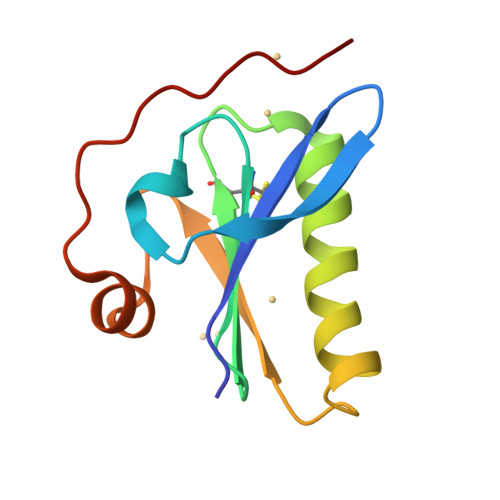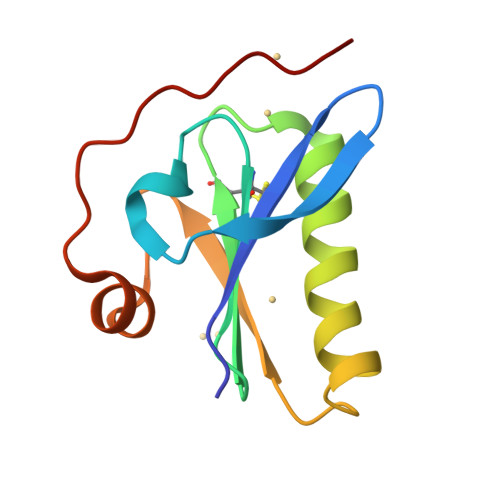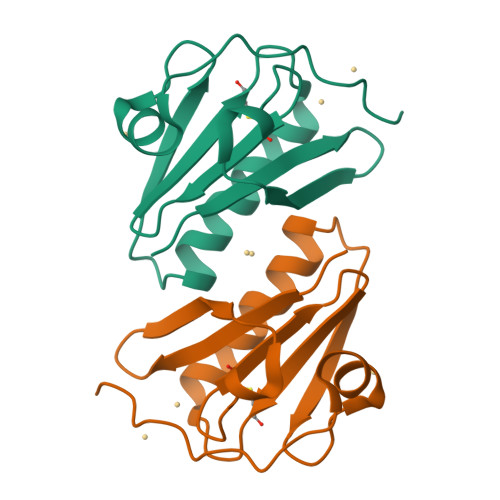Loss of a metal-binding site in gelsolin leads to familial amyloidosis-Finnish type.
Kazmirski, S.L., Isaacson, R.L., An, C., Buckle, A., Johnson, C.M., Daggett, V., Fersht, A.R.(2002) Nat Struct Biol 9: 112-116
- PubMed: 11753432
- DOI: https://doi.org/10.1038/nsb745
- Primary Citation of Related Structures:
1KCQ - PubMed Abstract:
Mutations in domain 2 (D2, residues 151-266) of the actin-binding protein gelsolin cause familial amyloidosis-Finnish type (FAF). These mutations, D187N or D187Y, lead to abnormal proteolysis of plasma gelsolin at residues 172-173 and a second hydrolysis at residue 243, resulting in an amyloidogenic fragment. Here we present the structure of human gelsolin D2 at 1.65 A and find that Asp 187 is part of a Cd2+ metal-binding site. Two Ca2+ ions are required for a conformational transition of gelsolin to its active form. Differential scanning calorimetry (DSC) and molecular dynamics (MD) simulations suggest that the Cd2+-binding site in D2 is one of these two Ca2+-binding sites and is essential to the stability of D2. Mutation of Asp 187 to Asn disrupts Ca2+ binding in D2, leading to instabilities upon Ca2+ activation. These instabilities make the domain a target for aberrant proteolysis, thereby enacting the first step in the cascade leading to FAF.
Organizational Affiliation:
Cambridge University Chemical Laboratory and Cambridge Centre for Protein Engineering, MRC Centre, Hills Road, Cambridge CB2 2QH, UK.


















